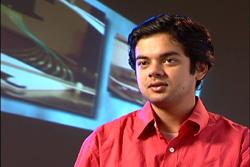Modeling and Data Inversion Techniques for Solar Neuron Detectors

My Hamel Honors and Scholars College thesis involved some of the most cutting-edge science you will ever see! I studied the instrument performance of the Fast Neutron Imaging Telescope (FNIT) that is being designed to detect neutrons emitted by the sun. This involves understanding nuclear physics, solar physics, astronomy and quantum mechanics. UNH has always been a pioneer in neutron astrophysics and this instrument is the future in probing the origin of cosmic rays in the sun and producing science and imagery of the sun never seen before.
Eventually, once designed, the FNIT will be sent to orbit the sun five times closer to it than we are. My research has been in how to design this efficient and accurate instrument. I have done this research both at UNH Space Science Center as part of Professor Jim Ryan's team, and and in Glasgow, Scotland, on an International Research Opportunities Program grant. Because the project is so cutting-edge, all the analysis and instrument design is very challenging and writing the thesis will also be a challenge since it will require compressing and presenting the information in absolute terms.
I can pick a course every semester that inspired me at UNH. I enjoyed the first-year integrated calculus/physics course, a Hamel Honors and Scholars College seminar I took with Professor John Aber on earth systems science, Shakespeare . . . you name it.